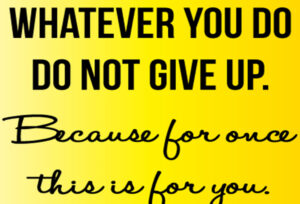Appointment with a Dutch
“So the appointment is fixed at ten thirty-five?” I ask as I quickly jot down 10:35 in my agenda. Sounds normal, one would say, but not to a Dutch. Even after twenty years one thing I just cannot get used to is the Dutch way of telling the time. In Dutch, time telling is done in the future tense instead of the past. The latter is what I have learnt as a child and am more used to. Before I go into explaining what I mean, it is important to know that the Dutch speak of the hour as a “whole”, which is the whole hour and “half” which is the half past.
It is common to divide an hour into four quarters or into two halves. This is also the system used in Holland. As a child I had learnt to tell the time in such a manner that if the long arm is on the right half of the clock, i.e. after twelve then it is always “past” the past hour and if the arms are on the left half (before twelve) then it is “to” the next hour.
Future oriented time telling
Now, going back to the Dutch manner of telling time in the future tense: in Dutch it is always “to” something, no matter where the arms of the clock are. “That’s easy” you may think, but wait a minute, in a manner of speaking! There is something more to it. What can be most confusing is that once you get past a quarter of an hour, the time will refer to the coming hour, not the hour you are currently in. Ten thirty-five, in Dutch is referred to as: five over the half to eleven! Especially the half before the next hour gets me all muddled up. Can it get more complicated? Oh yes, if it is twenty minutes past two, in Dutch it is stated as: ten to half to three. See what I mean? No wonder they refer to speaking double Dutch!!
As I was saying the Dutch way of telling the time is actually always looking ahead, and often the hour one hears is not the past hour but the one that is coming. So if a someone says “half seven” it is not seven thirty but 6:30 which is basically a half to seven. So 8:20 is said to be “Ten minutes until half nine.” This system still tends to drive me absolutely crazy. So whenever I make an appointment I always double check by asking, “the appointment is then fixed at eleven thirty five?” and skip out on the “to” part where my stumbling threshold lies.
Dutch Summer and winter time
It also becomes imperative to mention here, that , since 1977 Holland has a summer and a winter time. In the last weekend of October at night the clock is set an hour late. This is the winter time. In the last weekend of March, the clock is set an hour early and the summer time begins. The reason for this, is so that people could save energy such as electricity and use more of day light. In the summer, since the sun is up early, people wake up an hour ahead. In this way they can make use of the natural daylight and they stay up later in the evening, because it is still bright outside, long after the sun has set. Whereas in the winter, it is dark early, so if the clock is set an hour later, people could still use the daylight to its maximum.
Speaking of time, I just cannot get used to the Dutch way of counting either. I have been able to manage till twenty. That is because it goes the same way as I have learnt in English. But when it goes further than twenty, in Dutch, the unit number is mentioned first and then followed by the tens. So a twenty-five is a “five” and a “twenty”. Actually or should I say coincidentally this manner of counting is also used in Nepali! But in truth, I have a problem when it comes to counting in my own mother tongue too. So I suppose the confusion lies rather in me than the language in this matter.
After all these years I have not yet mastered the art of telling the time and counting in the Dutch manner. On second thought, I may never master them, so I think I’ll just stick to my own creative way around them.
While making an appointment
So while making an appointment with a Dutch, make very sure you know exactly what time you are both talking about.
Want to know more about the Dutch culture? This is an extract form my book Dutch-ess from the Himalayas. You can buy the book or e-book here.




